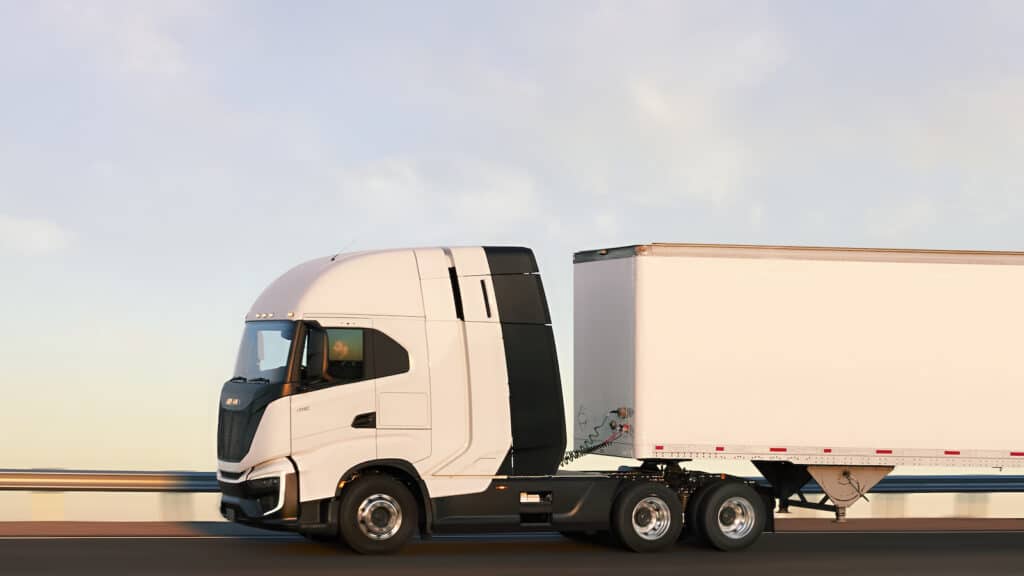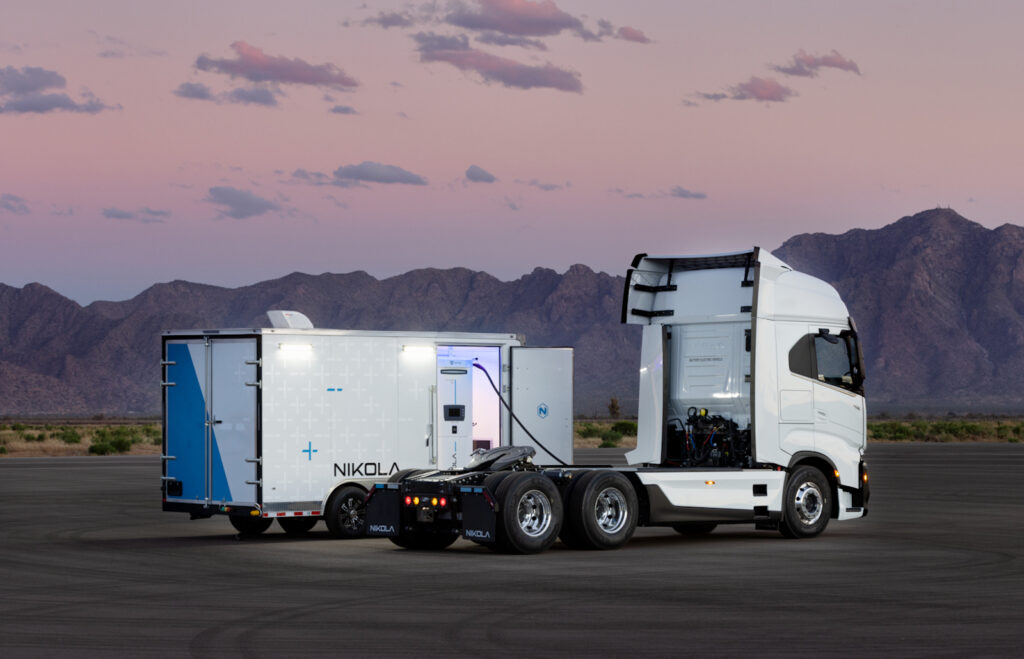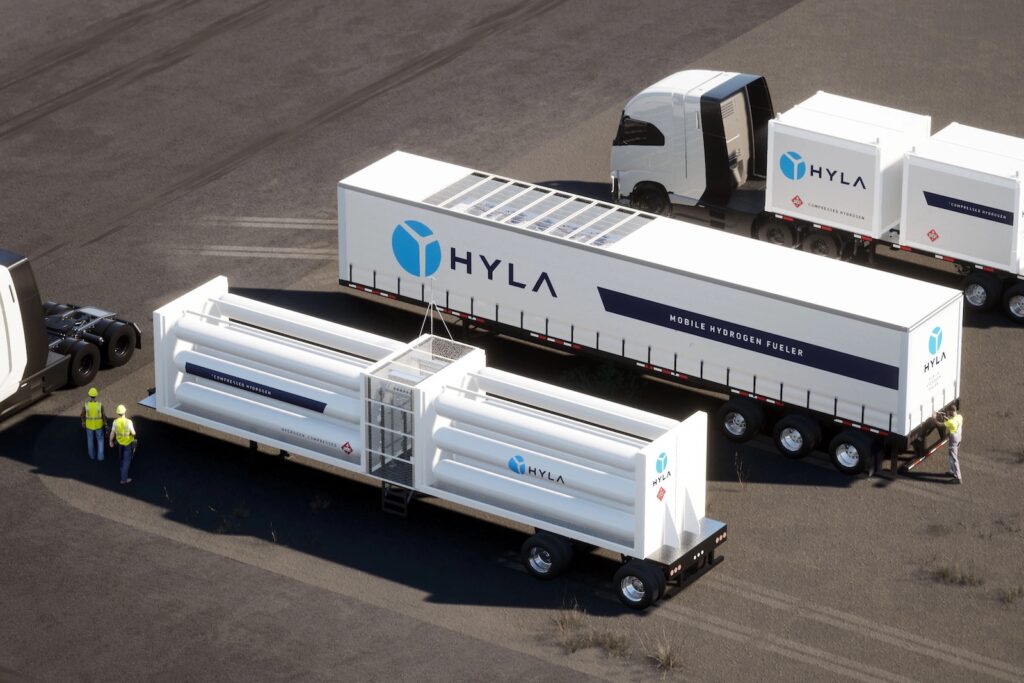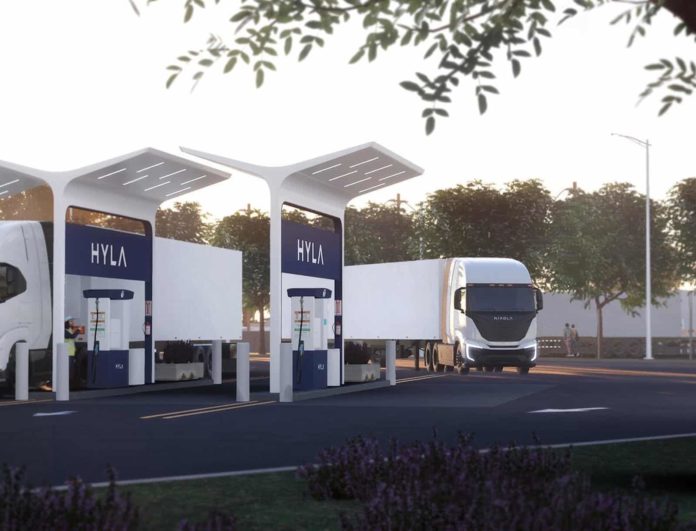Nikola Corp. plans to build a significant hydrogen infrastructure system to fuel a projected fleet of heavy-duty Class 8 commercial trucks powered by hydrogen-air fuel cells.
The company expects to field up to 7,500 of its Tre line of Fuel Cell Electric Vehicle (FCEV) trucks by 2026, and will need hydrogen available across the U.S. and Canada to make those vehicles viable.
Research into hydrogen production is being driven by tax credits available through the Inflation Reduction Act of 2022, also known as the IRA. The law provides production tax credits of 2.6 cents per kWh and up to $3 per kg of hydrogen for the first 10 years of operation.
Nikola’s made several announcements of increased investment in hydrogen technology and distribution this year. In mid-January, Nikola revealed the development of a mobile hydrogen refueling truck capable of refueling its FCEV trucks in the field.
“Nikola has spent the greater part of two years developing a flexible mobile fueling solution which cools and compresses hydrogen to rapidly fill 700 bar FCEV heavy-duty trucks,” said Nikola Corp. President and CEO Michael Lohscheller.
“Coupled with Nikola’s hydrogen tube trailer, with a capacity of 960 kg, Nikola’s mobile fueler can refuel customer trucks back-to-back. This will deliver flexible hydrogen fueling solutions for our customers starting in 2023 and will complement Nikola’s permanent hydrogen fueling stations which are being developed.”

Less than a week later, the company announced an order for 100 FCEV trucks to be delivered to Iveco for European use. Thirty of the initial 100 Nikola Tre FCEVs are expected to be delivered in 2024, with the remaining 70 vehicles to be delivered in 2025. The project involves German hydrogen provider GP Joule.
“Together with Nikola and Iveco, we offer our customers all the components for climate-neutral heavy-duty transport from a single source: from the production and purchase of green hydrogen to the hydrogen filling stations to the fuel cell trucks and service that meet their needs. This is the easy entry into emission-free freight transport,” stated Andre Steinau, managing director at GP Joule.
Hydrogen supply for Nikola vehicles
The day after the Iveco announcement, Nikola unveiled a partnership with Fortescu Future Industries (FFI) to invest in large-scale production of “green” hydrogen. FFI is a global energy company pursuing opportunities in more than 25 countries and a subsidiary of top 10 ASX company Fortescue Metals Group Ltd.

“North America has the potential to become the world’s leading green energy heartland,” said FFI CEO Mark Hutchinson. “This new partnership demonstrates FFI’s commitment to help decarbonize the transportation sector and enable the world to work towards achieving zero emissions. The incentives in the Inflation Reduction Act also make the U.S. one of the best places in the world to invest in green energy and create a pipeline of new jobs.”
A day later, Nikola announced a new division with its own brand of hydrogen, called HYLA, to service the company’s energy products for producing, distributing and dispensing hydrogen to fuel its FCEV trucks.
“The HYLA brand represents Nikola’s hydrogen-focused energy business by supporting our fuel cell electric vehicles and those of other OEMs,” said Carey Mendes, president, Nikola Energy. “Hydrogen energy is the catalyst for the HYLA brand and serves as a forward-looking solution for our customers to help them achieve their sustainability goals and dramatically reduce the overall carbon emissions in the transportation sector.”
Under the HYLA brand, Nikola is developing capability to deliver up to 300 metric tons per day of hydrogen, with production centers in Arizona, Indiana and Pennsylvania as well as Alberta, Canada. At least for now, it seems apparent the company will rely on its mobile refueling trucks while the long-term build-out of hydrogen fueling stations is underway.
Nikola says it plans to build 60 hydrogen stations by 2026. The first will be constructed in California in the communities of Colton, Ontario and a location servicing the Port of Long Beach. California is a launch market for the Nikola Tre FCEV, and these stations are intended to support key customers as part of the state’s efforts to decarbonize the transport sector.

What is Green Hydrogen?
The term “Green Hydrogen” has nothing to do with the element itself, but rather applies to the way the free hydrogen (H2) has been obtained. Generating and capturing free hydrogen is an energy-intensive process; it takes more energy to create the free H2 than can be generated by the same amount of gas in a fuel cell.
Further, differing methods of generating H2 have dramatically different environmental impacts. Hydrogen may be obtained by reforming natural gas or other hydrocarbons, but while this method uses less energy it also releases carbon dioxide, a greenhouse gas, into the atmosphere. Proponents argue this method of creating hydrogen will be necessary to enable the build out of substantial hydrogen infrastructure.
Water electrolysis takes significantly more energy, but does not release greenhouse gases. As long as the sources of electricity used to process the water are themselves clean and renewable, hydrogen can be produced without pollution. The hydrogen fuel cells themselves produce only electricity and pure water while operating.
Hydrogen companies with differing methods of production are involved in lobbying the U.S. Dept. of Treasury as the administration writes the regulations for which sources of hydrogen will be considered green for tax purposes.

